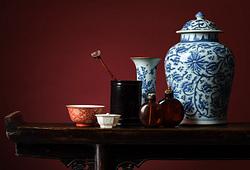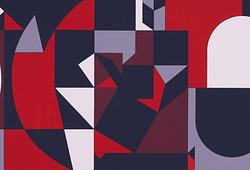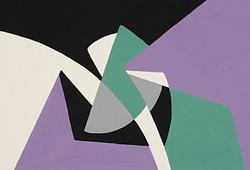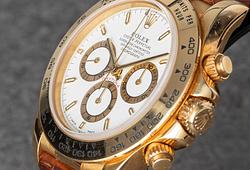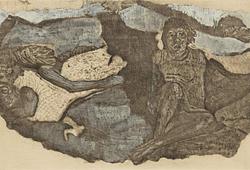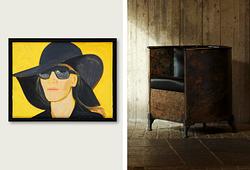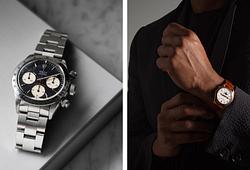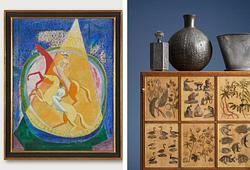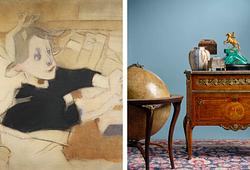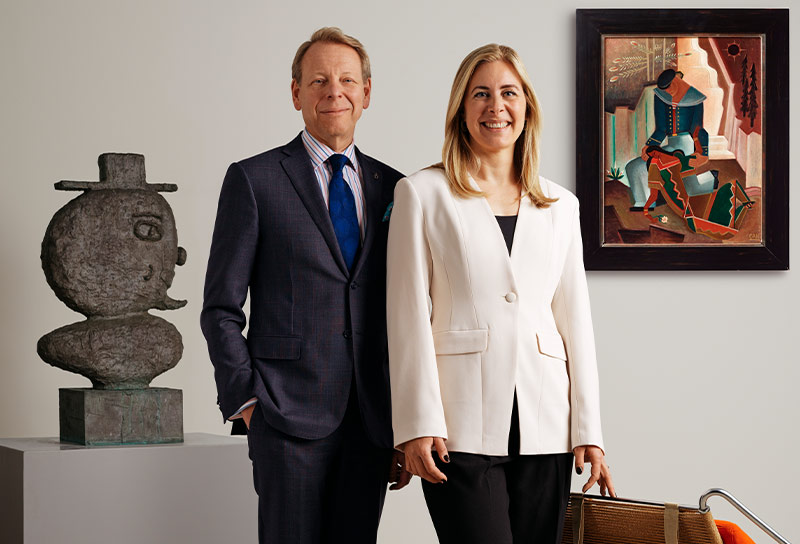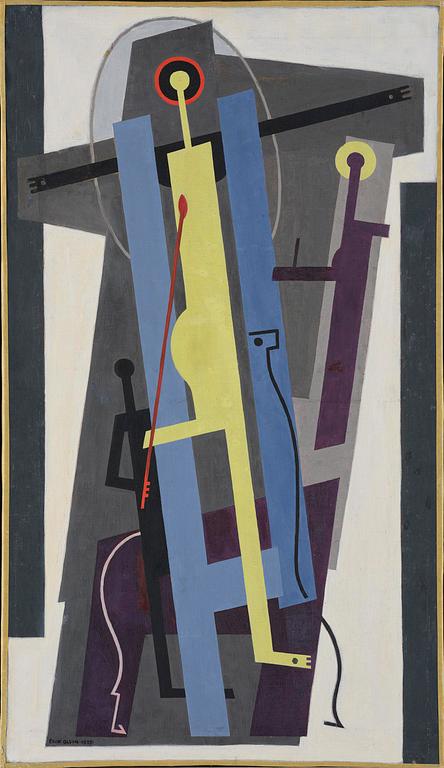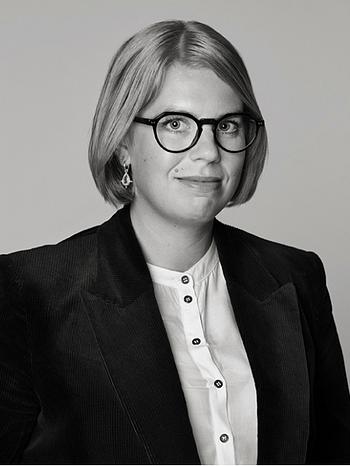Erik Olson
"Korsfästelse II"
Signed Erik Olson and dated 1928. Canvas 81 x 46 cm.
Alkuperä - Provenienssi
Directly from the artist, then by descent within the family.
Näyttelyt
Folkrörelsernas konstfrämjande utställning.
Kunstnernes hus, Oslo, 1960.
Liljevalchs konsthall, Stockholm, "Halmstadgruppen 60 år", 1989, cat. no. 291.
Kirjallisuus
Viveka Bosson, "Erik Olson - en sökares vandring"", 2001, compare gouache "Korsfästelse" illustrated in black and white p. 115 and in colour "Korsfästelse" I and II p. 422.
"Halmstad-Berlin-Paris 1920-1930", Stiftelsen Halmstadgruppen, 1984. Illustrated in black and white p. 223.
Muut tiedot
Erik Olson was born directly into the modern era. Industrialism, socialism, and modernism were some of the movements that were creating a different society from the one his parents’ generation had experienced. Although he grew up in a working-class home, Erik, along with his brother Axel, was clear from an early age that they wanted to become artists. Together with his cousin Waldemar Lorentzon, the three of them formed the artist group Gnistan (The Spark) in 1915.
A decisive event for the three young artists occurred in 1919, when Gnistan was noticed at an amateur exhibition in Halmstad by the engineer Egon Östlund, who introduced them to his protégé Gösta Adrian-Nilsson (GAN). GAN was already internationally established and became the one to show the young Halmstad artists the way to European avant-garde art. It was also GAN who served as the gateway to Légers Académie Moderne in Paris, which Erik Olson and Waldemar Lorentzon attended at the beginning of 1924. The two cousins succeeded in renting an apartment at 86, rue Notre-Dame-des-Champs, where they became neighbors with both GAN and Grünewald. On the ground floor was Léger’s academy, where Erik and Waldemar became two new students.
At Léger's, Erik Olson met Otto G. Carlsund, who introduced the two young Swedes to the nightlife of Paris and places where the avant-garde of the time gathered, such as Dôme, Rotonde, and later La Coupole. Erik felt like he was in paradise, absorbing the new winds blowing in Paris, the Mecca of avant-garde art. Despite living on the edge of poverty, he not only managed to study under the master Léger but also eagerly embarked on study trips around Europe whenever the opportunity arose, studying everything from Giotto and Cimabue's monumental art to Kandinsky’s abstract paintings.
Eventually, Erik ran out of money and was forced to return to Sweden to gather funds to go back to Paris. In 1927, he returned to Paris again, and as the seeker he was, he continued to explore the artistic scene there. He came into contact with more purist tendencies, meeting artists such as Ozenfant, Mondrian, and Christian Berg. Among his artist friends from Halmstad, Erik Olson was the one who stood out internationally. Not only was Erik the one Léger chose as one of his personal collaborators, but he was also the only one, not just Swedish but Scandinavian, who was invited to exhibit at the Mondrian, de Stijl and Their Impact exhibition at the Marlborough Gallery in New York in 1964.
Erik Olson also regularly exhibited together with Otto G. Carlsund and Christian Berg in Paris. In November 1928, the trio exhibited in Gothenburg alongside GAN. Art historian and GAN expert Jan Torsten Ahlstrand wrote the following about this exhibition in SDS in 1986: “It was no coincidence that GAN chose Christian Berg, Otto G. Carlsund, and Erik Olson as co-exhibitors at the Gothenburg Art Hall in 1928 – they were the foremost in the Swedish avant-garde of the time.”
In the auction piece Korsfästelse II, Erik Olson plays with so-called impossible figures. Through shifts in the different planes of the surface, he creates a sense of depth while maintaining the flat surface. The forms and figures in the painting constantly shift, so one simultaneously experiences both space and architectural plane.




